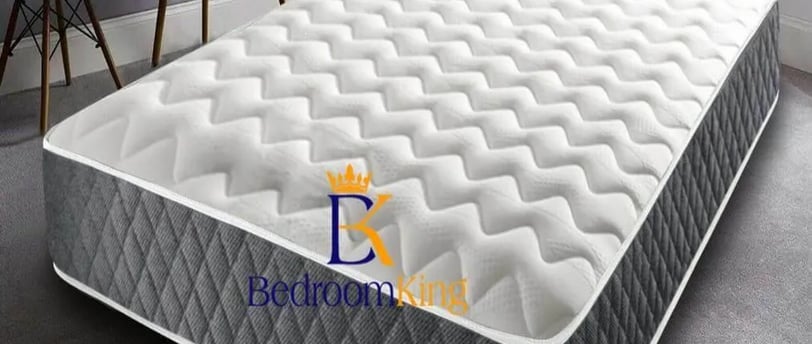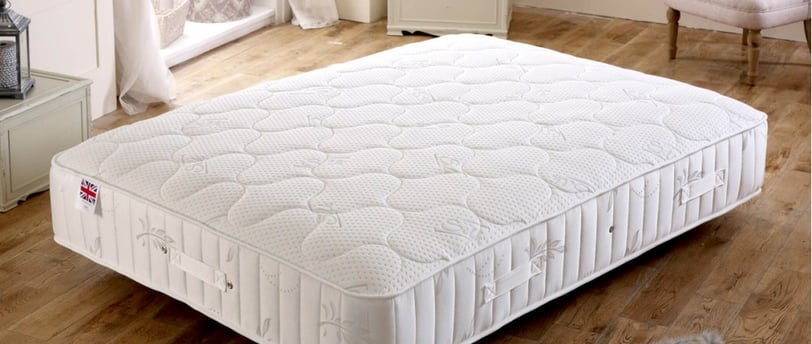What’s the Difference Between Latex and Memory Foam Mattresses?
What’s the Difference Between Latex and Memory Foam Mattresses? Latex mattresses are springy and bouncy with a quicker response time. When you press down, latex compresses but quickly springs back, providing a more buoyant feel.
QUALITY MATTRESSES


Choosing the right mattress is essential for a good night’s sleep, and two of the most popular options on the market today are latex and memory foam mattresses. If you’re wondering what’s the difference between latex and memory foam mattresses, you’re not alone.
Both materials offer unique benefits and drawbacks, and understanding these differences can help you pick the best mattress for your sleep style, comfort needs, and budget.


In this detailed guide, we’ll explore the key distinctions between latex and memory foam mattresses, covering aspects such as feel, support, durability, temperature regulation, and more. By the end, you’ll have a clear understanding of which mattress type suits your preferences.
What Are Latex and Memory Foam Mattresses?
Before diving into the differences, let’s define what each mattress type is:
Latex Mattress: Made from natural or synthetic latex rubber, latex mattresses are known for their elasticity, bounce, and durability. Natural latex is harvested from rubber trees, making it an eco-friendly and hypoallergenic choice. Latex mattresses often combine latex foam layers with springs for added support.
Memory Foam Mattress: Memory foam is a synthetic material originally developed by NASA, designed to contour closely to the body by responding to heat and pressure. It offers a “hugging” sensation, molding to your shape and slowly returning to its original form when you move.
Key Differences Between Latex and Memory Foam Mattresses
1. Feel and Responsiveness
Latex: Latex mattresses are springy and bouncy with a quicker response time. When you press down, latex compresses but quickly springs back, providing a more buoyant feel. This makes it easier to move around and change positions during sleep.
Memory Foam: Memory foam mattresses have a slower response time. They conform deeply to your body, giving a sinking, hugging sensation. This slow rebound can make it feel like you’re cradled by the mattress but may make moving or repositioning more difficult.
Summary: If you prefer a mattress that feels lively and responsive, latex is the way to go. If you want deep contouring and a “hug,” memory foam excels.


2. Support and Pressure Relief
Latex: Latex provides firm, consistent support with moderate contouring. It’s excellent for maintaining spinal alignment and is often recommended for those who prefer a more supportive surface or suffer from back pain.
Memory Foam: Memory foam is superior in pressure relief because it molds precisely to your body’s curves, reducing pressure points on hips, shoulders, and joints. This makes it ideal for side sleepers or those with chronic pain.
Summary: Memory foam offers better pressure relief, while latex provides firmer, more structured support.
3. Durability and Lifespan
Latex: Latex mattresses are generally more durable and longer-lasting. With proper care, a latex mattress can last up to 20 years due to its resilient, natural rubber composition.
Memory Foam: Memory foam mattresses typically last around 8 to 10 years. They are more prone to sagging and permanent impressions over time, especially if made from lower-density foam.
Summary: Latex mattresses tend to be a better long-term investment due to their durability.
4. Temperature Regulation
Latex: One of latex’s biggest advantages is its breathability. The open-cell structure and natural materials allow for excellent airflow, keeping sleepers cool and comfortable throughout the night.
Memory Foam: Traditional memory foam tends to retain body heat, which can cause discomfort for hot sleepers. However, many modern memory foam mattresses incorporate cooling gels, copper, or open-cell technology to improve airflow and reduce heat retention.
Summary: Latex is naturally cooler, while memory foam may sleep warmer unless specifically engineered for cooling.
5. Hypoallergenic Properties
Latex: Natural latex is naturally resistant to dust mites, mold, and allergens, making it a great choice for allergy sufferers.
Memory Foam: Memory foam is synthetic and can trap allergens if not regularly cleaned. It may require more maintenance to keep allergen-free.
Summary: Latex is generally more hypoallergenic and better for sensitive sleepers.
6. Price
Latex: Latex mattresses tend to be more expensive due to the cost of natural materials and manufacturing processes.
Memory Foam: Memory foam mattresses are typically more affordable and widely available in various price ranges.
Summary: Memory foam offers a budget-friendly option, while latex is a premium choice.


7. Motion Isolation and Edge
Support
Memory Foam: Excels at motion isolation, absorbing movement so you won’t feel your partner shift during the night. It also tends to have better edge support, allowing you to use the full surface of the mattress.
Latex: While latex isolates motion better than innerspring mattresses, it is less effective than memory foam. Latex mattresses may feel less stable at the edges due to their bounce.
Summary: Memory foam is better for couples sensitive to movement and those who use the mattress edges.
Which Mattress Is Right for You?
Your choice depends on your sleep preferences, budget, and any specific needs such as allergies or pain relief.
Factor Latex Mattress Memory Foam Mattress
Feel Bouncy, responsive Soft, body-hugging
Support Firm, structured Contouring, pressure relieving
Durability Up to 20 years 8–10 years
Temperature Regulation Naturally cool Can sleep warm (unless cooled)
Hypoallergenic Naturally resistant to allergens May trap allergens
Price Higher cost More affordable
Motion Isolation Moderate Excellent
Edge Support Moderate Better
Final Thoughts
Both latex and memory foam mattresses offer excellent comfort and support but cater to different sleep styles and needs. If you want a mattress with natural materials, excellent durability, and a cooler sleep environment, latex is an outstanding choice.
If you prefer a mattress that contours closely to your body, offers superior pressure relief, and isolates motion well, memory foam is likely the better fit.
When shopping, consider testing both types if possible, and look for quality certifications, trial periods, and warranties to ensure your investment leads to restful, restorative sleep for years to come.
